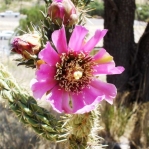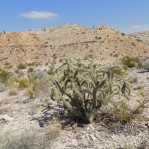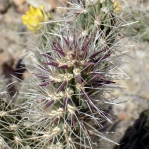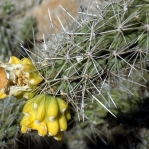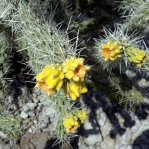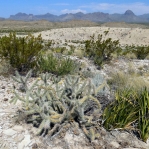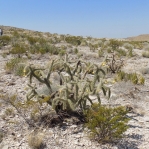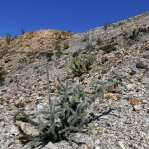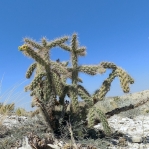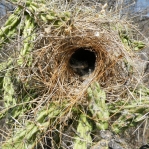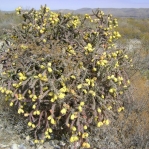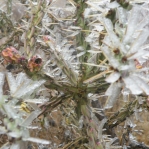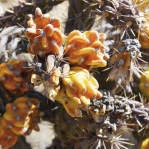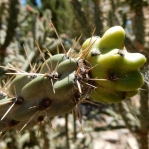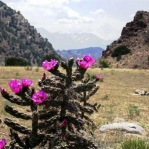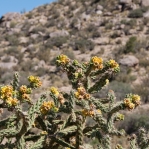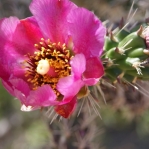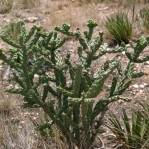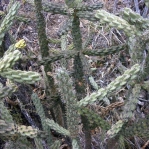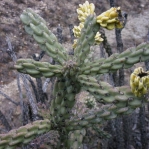(Haworth) De Candolle. 1828. Prodromus Systematis Naturalis Regni Vegetabilis 3: 471.
Herbarium specimen; Herbarium specimen (submitted as C. vexans); Herbarium specimen; Herbarium specimen; Herbarium specimen; Herbarium specimen; Herbarium specimen; Herbarium specimen (C. imbricata × C. leptocaulis); Herbarium specimen (C. imbricata × C. kleiniae); Herbarium specimen (C. imbricata argentea); Herbarium specimen (C. imbricata argentea); Herbarium specimen (C. ×viridiflora); Herbarium specimen (C. ×viridiflora); Herbarium specimen (C. ×viridifolora)
Original description
Flora of North America treatment
What is Cylindropuntia imbricata?
Cylindropuntia imbricata is a large cholla that is frequently encountered across a variety of habitats from Colorado south through eastern Arizona, most of New Mexico, and west Texas, south through much of central Mexico to Hidalgo.
Details
C. imbricata (per the Flora of North America) is spreading into Oklahoma and Kansas, likely as the result of cattle ranching. It is a short-trunked tree or large shrub with widely spreading branches reaching up to 3 m tall, with reports of some individuals to 5 m tall. Stems are firmly attached and 10 to 40 cm long by 1.5 to 4 cm wide. Tubercles are very prominent. The areoles average 8 to 15 tan to red or brown spines which generally do not obscure the stem. Spine sheaths are usually off-white to tan and yellow-tipped. The flowers are dark pink to red-magenta with filaments and styles which are green at the base and pink at the tip. Stigmas are cream to green. The fruits are yellow, fleshy, and spineless. C. imbricata is diploid (2n = 22).
The Flora of North America currently recognizes one variety of C. imbricata: C. imbricata var. argentea. This variety is endemic to a narrow region of the Big Bend region of Texas and is a dense shrub to 1.2 m tall with silver spines and sheaths and close-set tubercles. Naturally occurring hybrids between C. imbricata and C. whipplei (C. ×viridiflora — sometimes called the “Santa Fe cholla”) are known from several locations. C. imbricata also hybridizes with C. spinosior where the ranges of those species come together.
C. imbricata is a dominant plant in some parts of its range, and it is particularly abundant in the Albuquerque, New Mexico region. Britton and Rose, writing about C. lloydii, a synonym of C. imbricata, reported that the species is known as tasajo macho in Mexico. C. imbricata is a cold-hardy and wet-tolerant cactus often employed in cactus gardens in cold or humid climates.

